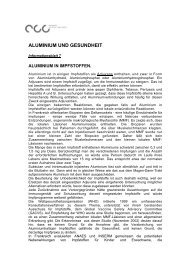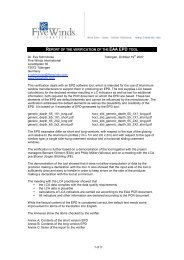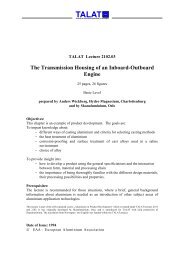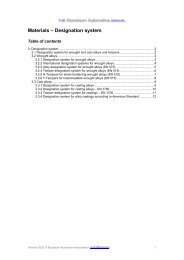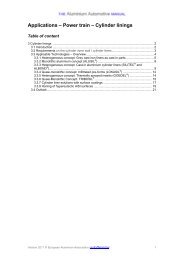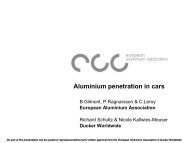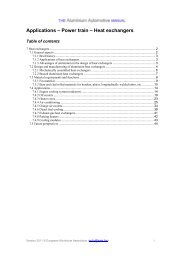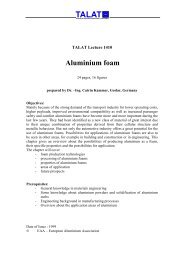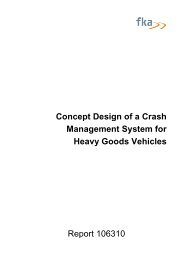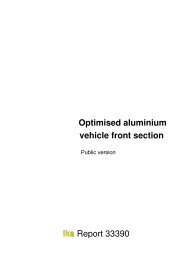Manufacturing – Casting methods - European Aluminium Association
Manufacturing – Casting methods - European Aluminium Association
Manufacturing – Casting methods - European Aluminium Association
You also want an ePaper? Increase the reach of your titles
YUMPU automatically turns print PDFs into web optimized ePapers that Google loves.
1.12.4 Pouring & finishing<br />
Simplified decomposition of EPS during form filling<br />
Source: LWF/ZVG Paderborn<br />
Pouring: During the filling process the molten metal flows via the gate system into the EPSpatterns,<br />
which is gasified, filling up the cavity and replacing exactly the pattern geometry.<br />
During this stage it is important to avoid turbulences, support the casting cavity wall and to<br />
realise a progressive elimination of the foam pattern. The gas originating from EPS<br />
decomposition permeates the coating layer and escapes into the sand, possibly supported by<br />
an external vacuum (see schematic fig. above). Form filling velocity and type of metal flow,<br />
i.e. laminar or turbulent, determine the part's quality by influencing the amount of oxide<br />
inclusions and porosity. Specifically, the following sets of parameters have to be tuned to<br />
each other:<br />
permeability of coating,<br />
optional external vacuum,<br />
metal temperature,<br />
EPS-pattern density and type of adhesive,<br />
geometry of the gating / riser system and of the patterns.<br />
Dumping, quenching and trimmig:<br />
After solidification of the casting, the sand can be removed from the flask and be prepared for<br />
the following moulding. Clusters are quenched and knocked-off from the gate system. The<br />
castings are purged and controlled w.r.t. defects. In many applications the castings don't<br />
require any further mechanical finishing.<br />
Version 2002 © <strong>European</strong> <strong>Aluminium</strong> <strong>Association</strong> (auto@eaa.be) 77



